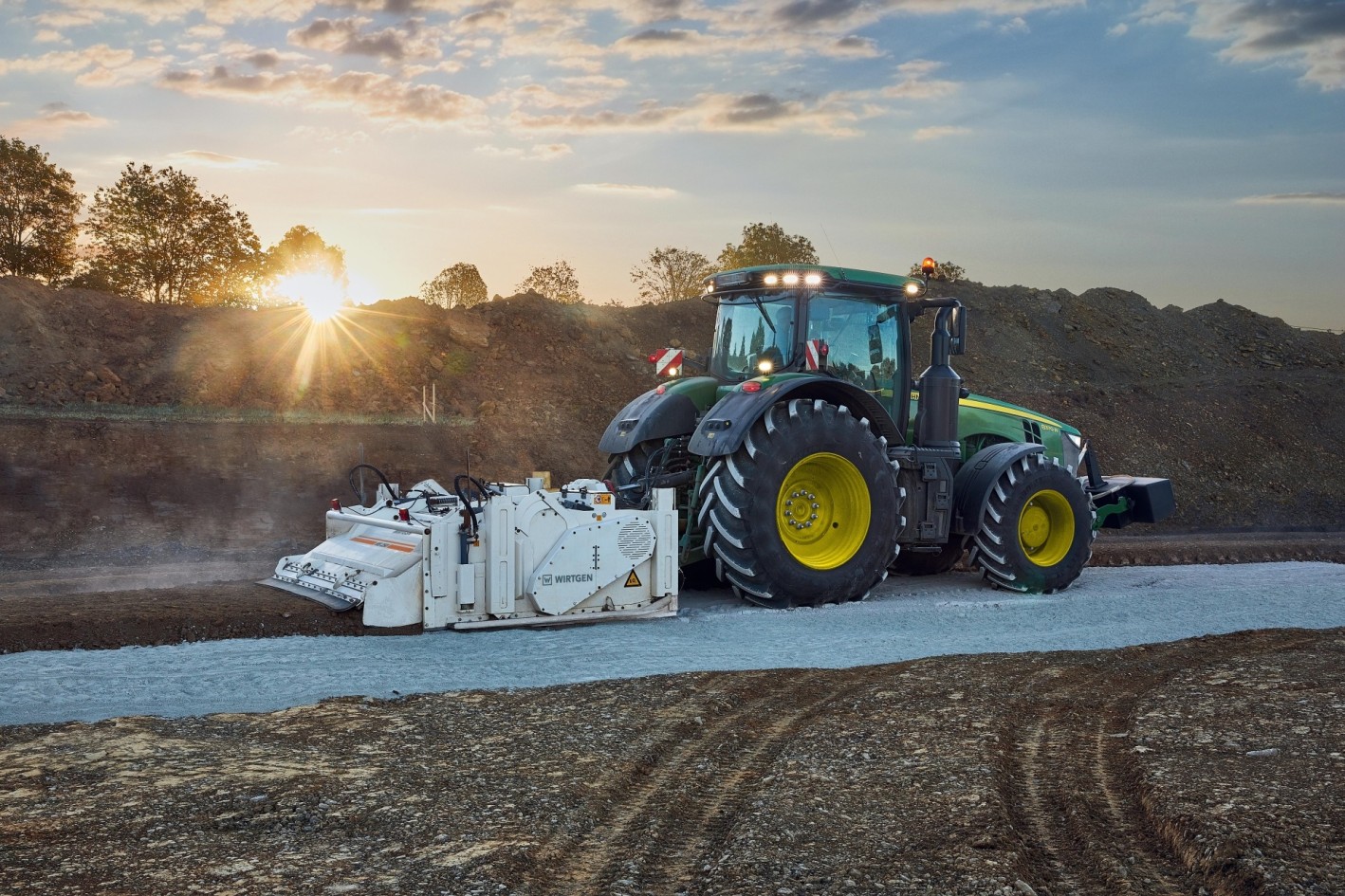Functional Principle of Soil Stabilization


Whether heavy, coarse-grained, or sandy, the tractor-towed stabilizer reliably transforms the sub-base into a surface with excellent paving and compacting properties. Mixed granulate that is too coarse is crushed in the mixing chamber by the milling and mixing rotor. Soft soil is covered with lime, e.g. by a spreader truck, before processing. During the subsequent, homogeneous mixing process using the milling and mixing rotor, the lime removes the moisture from the soil. Soil improvement proves its worth in earthworks, e.g. for the construction of dams, embankments, backfilling, or construction site transport routes. Soil improvement has also proven to be highly effective in landfills with clayey subsoil. The soil is treated with suitable binding agents, is practically impervious to moisture, and offers the best conditions for further compaction.
The recipe for increasing long-term stability in the face of traffic and weather conditions is to strengthen the soil by adding binding agents such as cement. The cement is pre-spread using a spreader truck, for example, and then carefully mixed in by the milling and mixing rotor. The result of soil consolidation is a rigid surface with a permanently high bearing capacity as well as excellent frost resistance. Soil consolidation guarantees a high degree of permanent volume stability. Sample extraction and on-site analyses confirm the defined objectives. The prepared areas are ideally suited for the construction of parking lots, roads, sports fields, railroad tracks, port facilities, airports, and industrial facilities.
